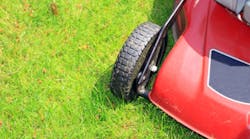While mowing the lawn might seem like a harmless summer routine, the lawnmower is one of the most dangerous household tools. Some 68,000 people – 9,400 of them children – visit the emergency room each year for lawnmower-related injuries, according to the American Academy of Pediatrics.
Most childhood injuries due to lawnmowers involve riding mowers, and most are injured in their own yard. The most common injuries associated with mowers include lacerations, amputations, fractures, infections and skin defects.
“One important statistic to remember is that a significant number of these accidents occur among family members,” says Junichi Tamai, M.D., of the Division of Pediatric Orthopaedic Surgery at Cincinnati Children’s Hospital Medical Center. “Most families think that if the child stays with a family member, everything will be OK, but that is not always the case.”
Tamai and the American Academy of Pediatrics offer the following tips for keeping kids safe around lawnmowers:
- Children younger than 15 should not be in the yard when someone else is mowing.
- Children younger than 12 should not use walk-behind mowers.
- Children younger than 16 should not be allowed to use ride-on mowers.
- Children or adults should never be allowed as passengers on ride-on mowers.
When operating the lawnmower:
- Do not pull the mower backward or mow in reverse unless absolutely necessary, and carefully look for children behind you when you mow in reverse.
- Always turn off the mower and wait for the blades to stop completely before removing the grass catcher, unclogging the discharge chute or crossing gravel paths, roads or other areas
- Wear hard-soled, sturdy shoes around mowers (no sandals or sneakers).
- Wear hearing and eye protection when operating a mower. Prevent injuries from flying objects, such as stones or toys, by picking up objects from the lawn before mowing begins.
Lawnmowers should have the following safety features:
- Automatic blade disengagement when the mower is placed in reverse.
- A control that stops the mower from moving forward if the handle is released.
- A blade safety device (for ride-on mowers) that disconnects the blade from the power source when the operator leaves the operating position.
